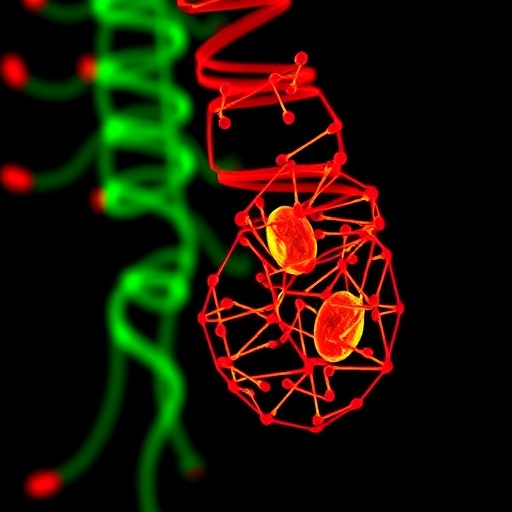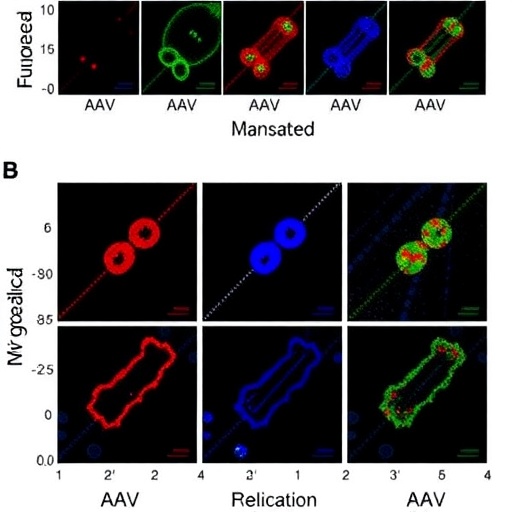In a groundbreaking study published in Cell Death Discovery, researchers have unveiled novel insights into the molecular mechanisms driving bladder cancer progression, emphasizing the role of the long non-coding RNA (lncRNA) LEADR as a critical regulator of interferon signaling. This discovery not only broadens our understanding of bladder cancer’s biology but also opens new avenues for therapeutic interventions targeting cancer’s immune evasion strategies.
Bladder cancer remains one of the most commonly diagnosed malignancies worldwide, with high recurrence rates and limited treatment options in advanced stages. The immune microenvironment plays a pivotal role in cancer progression and response to therapy, with interferon signaling pathways being a central component of the antitumor immune response. However, tumor cells frequently develop sophisticated mechanisms to evade immune surveillance, often through the modulation of interferon signaling, thereby fostering tumor growth and resistance to immune-mediated eradication.
The study spearheaded by Barnaba, Franzese Canonico, Helmer-Citterich, and colleagues focuses on the identification and characterization of LEADR, a long non-coding RNA directly regulated by the transcription factor p63, which is known for its diverse roles in epithelial development and cancer. LEADR emerges as a critical molecular effector capable of attenuating interferon signaling, enabling bladder cancer cells to dampen immune responses and sustain malignant phenotypes.
.adsslot_hASRKwWztY{ width:728px !important; height:90px !important; }
@media (max-width:1199px) { .adsslot_hASRKwWztY{ width:468px !important; height:60px !important; } }
@media (max-width:767px) { .adsslot_hASRKwWztY{ width:320px !important; height:50px !important; } }
ADVERTISEMENT
LEADR is a fascinating addition to the burgeoning field of lncRNAs, which have rapidly gained attention for their nuanced regulatory functions in gene expression. Unlike protein-coding genes, lncRNAs modulate cellular processes through interactions with DNA, RNA, and proteins, fine-tuning signaling networks and transcriptional landscapes with remarkable specificity. LEADR exemplifies such complexity by targeting key nodes within the interferon pathway, thereby modulating the downstream effects that dictate cellular immunity.
Mechanistically, the research explores how LEADR expression is directly under the transcriptional control of p63, a member of the p53 family well-recognized for its tumor-suppressive and oncogenic roles depending on cellular context. Using sophisticated molecular biology techniques, including chromatin immunoprecipitation sequencing and RNA interference, the team demonstrated a clear regulatory axis from p63 to LEADR, linking epithelial differentiation signals with immune modulation.
The dampening effect of LEADR on interferon signaling appears to be mediated through its interaction with key transcriptional regulators of interferon-stimulated genes (ISGs). By repressing ISG expression, LEADR effectively weakens the antiviral and antiproliferative responses typically induced by interferon pathways, allowing bladder cancer cells to escape immune detection and thrive in an otherwise hostile microenvironment.
Interestingly, the functional consequences of LEADR-mediated suppression of interferon signaling extend beyond immune evasion. The study uncovers that LEADR also modulates factors involved in cell proliferation, apoptosis resistance, and metastatic potential, underscoring its multifaceted role in tumor biology. This pleiotropic impact positions LEADR as a linchpin in the complex crosstalk between cancer cells and their immune milieu.
Clinical correlations further reinforce the biological importance of LEADR. Data gathered from patient-derived tumor samples revealed that higher LEADR expression levels are associated with more aggressive bladder cancer phenotypes and poorer prognoses. These findings suggest that LEADR might serve as a potential prognostic biomarker, helping clinicians stratify patients based on their tumor’s immune modulatory capacity.
From a therapeutic standpoint, targeting LEADR offers a promising strategy to reinvigorate interferon signaling in bladder cancer. The researchers propose that suppressing LEADR expression or function could restore immune surveillance mechanisms, enhancing the efficacy of existing immunotherapies such as immune checkpoint inhibitors. This approach resonates with the ongoing paradigm shift in oncology toward combinatorial treatments that unleash the full potential of the immune system against tumors.
Moreover, the study utilized advanced in vitro and in vivo models to validate LEADR’s role in tumor immune evasion. Bladder cancer cell lines with genetically inhibited LEADR showed increased sensitivity to interferon treatment and exhibited reduced tumorigenicity when implanted in immunocompetent mice models. These preclinical results lay the groundwork for future clinical trials targeting LEADR-related pathways.
In the broader context of cancer biology, this research highlights the intricate interplay between non-coding RNAs and immune signaling pathways, emphasizing the importance of considering non-protein-coding elements in the tumor microenvironment. By unveiling LEADR’s pivotal function, the study sets a precedent for further investigations into lncRNA-mediated regulation of immune responses in various cancer types.
The discovery also underscores the versatility and complexity of p63’s regulatory network. As a master regulator in epithelial tissues, p63’s influence extends beyond cell differentiation and proliferation, encompassing immune regulation through lncRNA intermediates such as LEADR. This expanded understanding of p63’s functions can inform new therapeutic angles in epithelial cancers, not limited to the bladder.
Furthermore, the research leverages cutting-edge genomic and transcriptomic technologies, reflecting an era where high-throughput sequencing and computational analyses are indispensable tools in decoding cancer’s molecular underpinnings. Such integrative approaches allow researchers to pinpoint subtle yet impactful regulatory molecules like LEADR within vast genomic landscapes.
Importantly, the implications of LEADR’s modulation of interferon signaling resonate beyond cancer. Interferon pathways are central to antiviral defenses and immune homeostasis, and their dysregulation contributes to a spectrum of diseases. Understanding how lncRNAs like LEADR fine-tune these pathways can illuminate novel aspects of immune regulation with potential relevance in autoimmune and infectious diseases.
As the scientific community digests these findings, questions naturally arise regarding the mechanisms controlling LEADR’s expression in normal versus cancerous tissues, and how its activity might be influenced by the tumor microenvironment, including inflammatory cues and cellular stressors. Addressing these questions could deepen our insight into dynamic tumor-immune interactions.
To conclude, the identification of LEADR as a p63-targeted lncRNA that attenuates interferon signaling offers a profound advance in our comprehension of bladder cancer biology. This work illustrates the powerful role of non-coding RNAs in orchestrating immune evasion, revealing novel molecular targets to disrupt cancer’s defense tactics. As researchers continue to unravel the complexities of tumor immunity, discoveries like LEADR pave the way toward more effective, immune-informed cancer therapies that could transform patient outcomes globally.
Subject of Research: Bladder cancer molecular biology, long non-coding RNA regulation, interferon signaling, tumor immune evasion
Article Title: LEADR, a p63 target, dampens interferon signalling in bladder cancer
Article References:
Barnaba, D., Franzese Canonico, M., Helmer-Citterich, M. et al. LEADR, a p63 target, dampens interferon signalling in bladder cancer. Cell Death Discov. 11, 264 (2025). https://doi.org/10.1038/s41420-025-02546-1
Image Credits: AI Generated
DOI: https://doi.org/10.1038/s41420-025-02546-1
Tags: advanced bladder cancer treatment optionsbladder cancer immune evasioncancer progression mechanismsimmune microenvironment in cancerimmune response in tumor growthinterferon signaling regulationLEADR long non-coding RNAlncRNA in cancer researchmolecular mechanisms in cancer biologyp63 transcription factor roletherapeutic interventions for bladder cancertumor immune surveillance evasion





